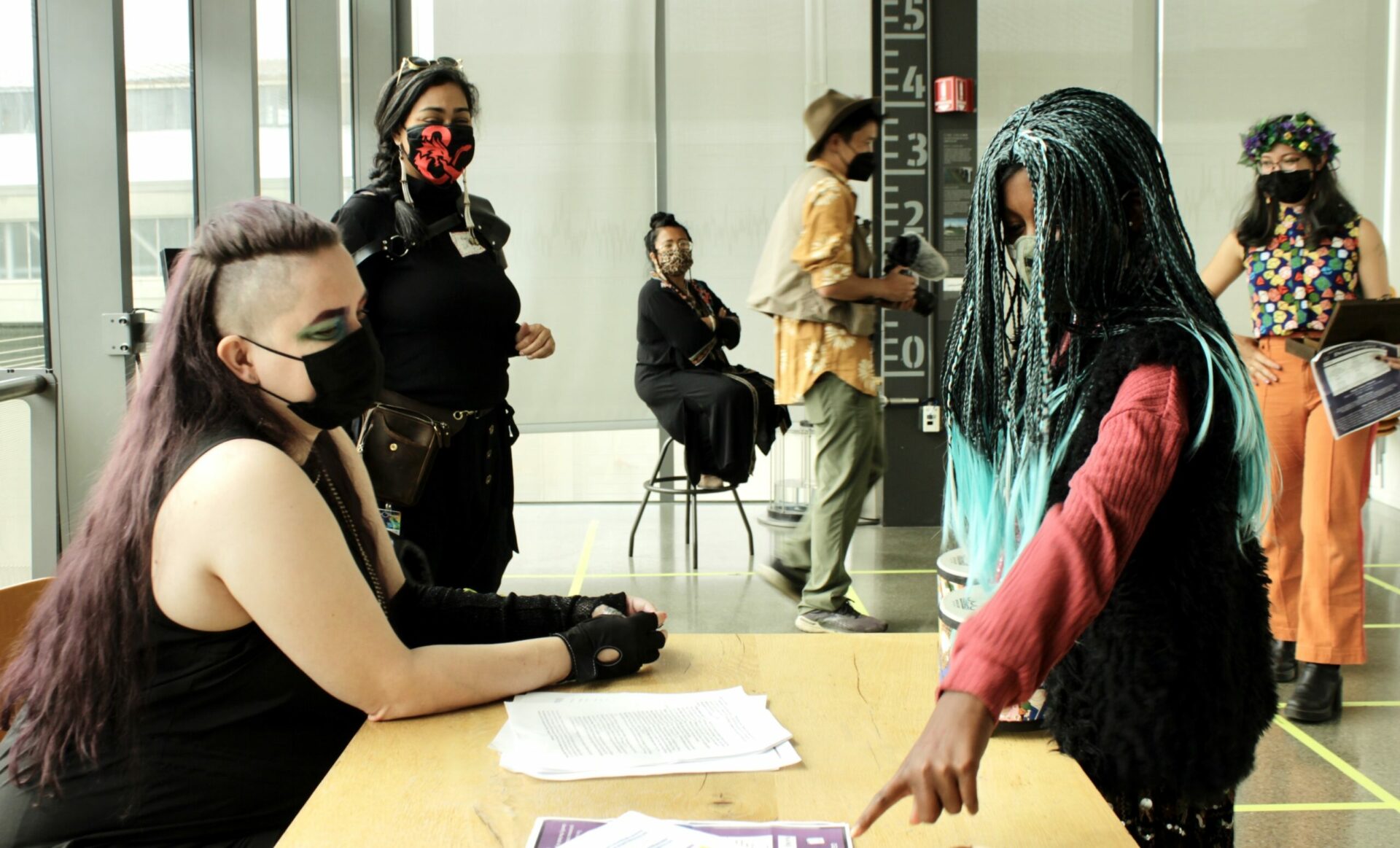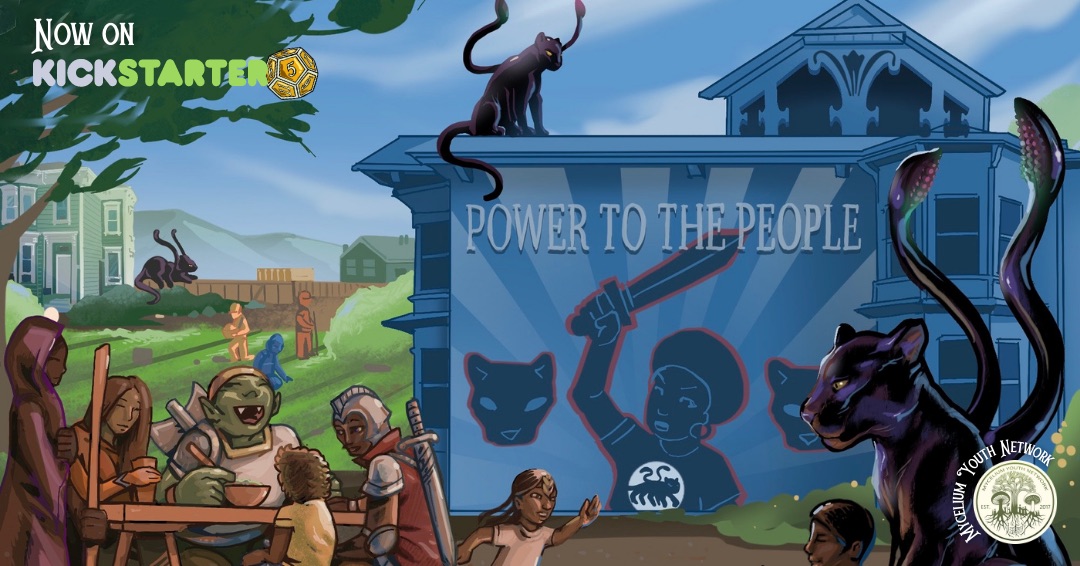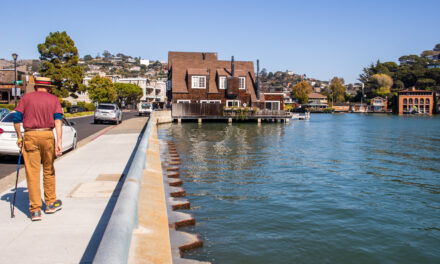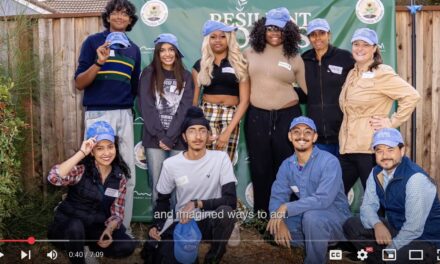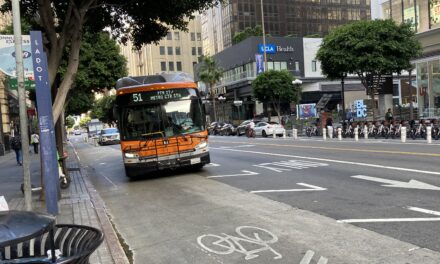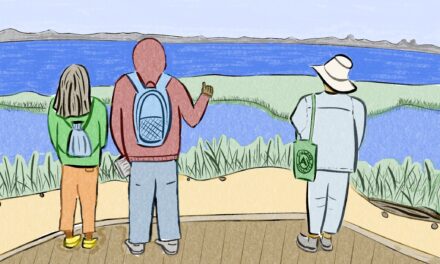Imagining a More Climate-Just World
You’re playing a game where mythical creatures have suddenly emerged from the earth, running loose and causing chaos in your local neighborhood. It isn’t possible to put the magical beings back into the ground — so your job is to figure out how to keep everyone safe by transforming the pandemonium into something positive.
Now, consider this: what if these “creatures” were actually fossil fuels that have been extracted? Now that they’ve been released into the atmosphere, is it possible to dream of real, positive solutions to reduce the damage?
This creative query stems from just one of ten environmental justice adventures in the The Mycelium Youth Universe Gaming for Justice Compendium. This collection of Dungeons & Dragons Style games is the latest brainchild to come from Mycelium Youth Network and is meant to encourage young players to approach climate and social change with an uninhibited imagination.
“We’re imagining a future that is more positive where we can build together — create space and time to dream together — the kind of world we want to see and adventure into,” says lead storyteller Marcy Brown.
While the games in the compendium are inspired by the landscape of the San Francisco Bay Area, they actually take place in a magical realist world called the Mycelium Universe, aka the Myc-U—or as Brown says, the “theater of the mind.”
Within this fictional universe, the adventures explore different social justice and environmental movements ranging from the 1800s all the way to the future, ultimately combining real historical issues with a fantastical element.
Art depicting a climate-just imaginary world. Art: Mycelium.
Whether it’s air pollution, rising sea levels, or gentrification, problems that exist within Myc-U are also real world problems. (A game played at the Exploratorium in August 2022 focused on clean air in a port city like Oakland.) But unlike the real world, this imagined world knows no bounds, giving players more creative freedom to uncover answers to the most pressing social and climate issues.
Brown says that by allowing players to approach intense climate justice topics through something as fun and light-hearted as a game, not only is creativity awakened, but a sense of hope is injected back into the climate movement.
“It’s an intentional space to create joy where there’s emotional catharsis, where [players] can speak more easily about how they’re feeling,” says Brown.
This imaginative space, says Brown, has allowed young players to flourish. Not only have students shown expressiveness and engagement while playing the games, but she has also witnessed the building of several skills, like collaboration, confidence, and empathy.
These essential skills, combined with historical knowledge and a limitless imagination, are the perfect recipe for players and people to collectively dream up and build a more climate-just world.
For Brown, this is perhaps the most important objective of the games: “We want to create a solution together.”
Other Recent Posts
Gleaning in the Giving Season
The practice of collecting food left behind in fields after the harvest is good for the environment and gives more people access to produce.
New Study Teases Out Seawall Impacts
New models suggest that sea walls and levees provide protection against flooding and rising seas with little effect on surrounding areas.
Oakland High Schoolers Sample Local Kayaking
The Oakland Goes Outdoors program gives low-income students a chance to kayak, hike, and camp.
Growing Better Tomatoes with Less Water
UC Santa Cruz researchers find the highly-desired ‘Early Girl’ variety yields more tomatoes under dry-farmed conditions.
Santa Clara Helps Homeless Out of Harm’s Way
A year after adopting a controversial camping ban, Valley Water is trying to move unsheltered people out of the cold and rain.
The Race Against Runoff
San Francisco redesigns drains, parks, permeable pavements and buildings to keep stormwater out of the Bay and build flood resilience.
Learning the Art of Burning to Prevent Wildfire
In Santa Rosa’s Pepperwood Preserve, volunteers are learning how controlled fires can clear out natural wildfire fuel before it can spark.
Martinez Residents Want More Than Apologies — They Want Protection
After a 2022 release of toxic dust and a February 2025 fire, people in the northeast Bay town are tired of waiting for safety improvements.
Weaving Fire Protection Out Of What’s Already There
A new Greenbelt Alliance report shows how existing vineyards, grasslands, and managed forests can slow wildfire and save vulnerable homes.
Fall Plantings Build Pollinator Habitats in Concord
Community groups, climate advocates and a church are coming together to plant pollinator gardens as monarchs, bees see population declines.






